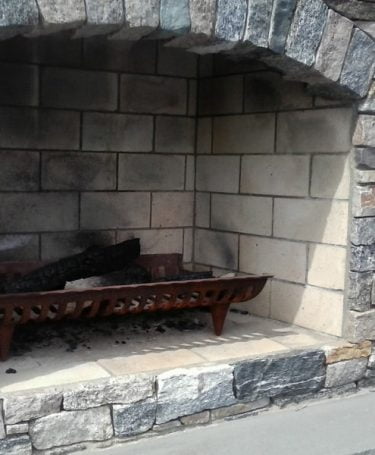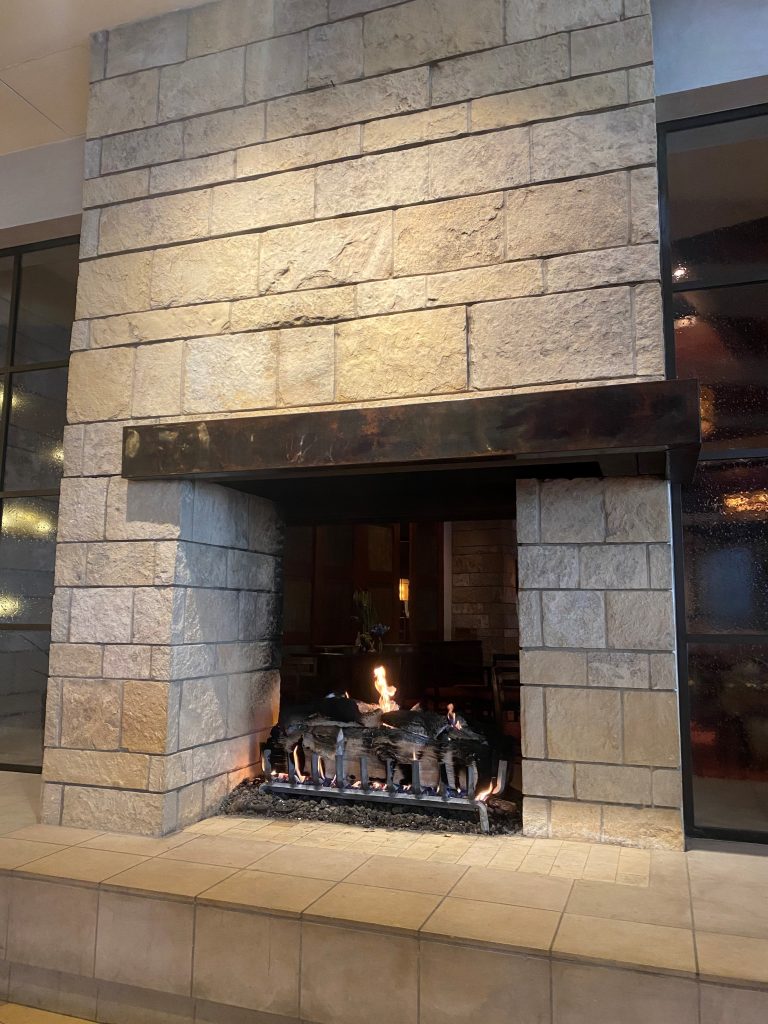Lining a fireplace with fire brick is a popular way to improve the efficiency and longevity of your fireplace. Fire bricks are designed to withstand high temperatures and line the inside of fireplaces and wood stoves. The lining protects the fireplace from the extreme heat generated by the fire and helps to retain the heat for longer. In this article, we will explore the advantages and disadvantages of lining a fireplace with fire bricks, how to install fire bricks, and how to maintain them.
What are Fire Bricks?
Fire bricks, or refractory bricks, are specially designed bricks made from refractory ceramic materials. These materials are chosen to withstand high temperatures and harsh conditions. Fire bricks are used to line the inside of fireplaces, wood stoves, and kilns to protect the surrounding structures from the extreme heat generated by the fire.
Types of Fire Bricks
Several types of fire bricks are available on the market, each designed for specific applications. Standard fire bricks are the most commonly used and suitable for domestic applications. These bricks have a maximum temperature rating of around 1200°C and are made from clay and other natural materials. High-duty fire bricks have a higher temperature rating and are made from high-alumina, silica, or zircon materials. These bricks are suitable for industrial applications and can withstand temperatures up to 1800°C.
Benefits of Using Fire Bricks
Fire bricks offer numerous benefits when used to line a fireplace. They provide excellent insulation, which helps retain heat for longer and reduce heat loss through the fireplace’s walls. The bricks also protect the surrounding structures from the extreme heat generated by the fire, reducing the risk of fire damage. Fire bricks are durable and long lasting, making them a cost-effective option for lining a fireplace.
Installing Fire Bricks
Installing fire bricks in a fireplace is a job best left to professionals. The process involves removing the old lining, cleaning the fireplace, and installing the new fire bricks. The bricks are held in place with a heat-resistant mortar, which is applied to the back of the brick before it is placed in the fireplace. The mortar is left to dry before the fireplace is ready.
Maintaining Fire Brick Lining
Maintaining fire brick lining is relatively simple. Regular cleaning is essential to remove any ash or debris accumulated in the fireplace. Inspecting the lining regularly for any signs of damage, such as cracks or chips, is also important. Damaged fire bricks should be replaced immediately to ensure the continued safety and efficiency of the fireplace.
Cost of Lining a Fireplace with Fire Brick
The cost of lining a fireplace with fire brick varies depending on the size of the fireplace and the type of fire bricks used. On average, homeowners can expect to pay around $500-$1000 for the materials and installation. However, the cost may be higher for larger fireplaces or high-duty fire bricks.

In conclusion, fire bricks are an excellent option for lining a fireplace. They provide excellent insulation, protect the surrounding structures from heat damage, and are durable and long-lasting. While the cost of installation may be higher than other lining options, fire bricks offer
Step-by-Step Guide to Laying Firebrick
Fire Brick – Cape Cod MA RI CT
Outdoor kitchen/fireplace made entirely of brick and lined with
The Fireplace Chamber; an overview – English Fireplaces
The Fireplace Chamber; an overview – English Fireplaces
The Fireplace Chamber; an overview – English Fireplaces
How do I Repair my Fireplaceu0027s Fire Brick? – Earthcore
Paint the brick inner liner of a fireplace u2014 Gas Grills, Parts
4 Types Of Liners To Redecorate Your Fireplace With
All About Fireplaces – This Old House
Fire Clay Bricks vs. All Natural Soapstone Firebrick Stonetrade®
Chimney u0026 Fireplace Repairs: Inside Your Firebox: Fire Brick
Fix-It Chick: Replacing firebricks News, Sports, Jobs – Lawrence
Related Posts:
- Small Brick Fireplace
- Remodel Brick Fireplace With Stone
- Red Brick Outdoor Fireplace
- How To Clean Mold Off Brick Fireplace
- Painted Gray Brick Fireplace
- Paint Wash Brick Fireplace
- Victorian Brick Fireplace
- Old Brick Fireplace Remodel
- Update Old Brick Fireplace
- Old Brick Fireplace Makeover Ideas
Lining A Fireplace With Fire Brick: A Comprehensive Guide
Fireplaces are a luxurious addition to any home, and they add warmth and comfort to a room. However, fireplaces can also be dangerous if the right precautions are not taken. This is why it is essential to line your fireplace with fire brick.
Fire brick is a type of refractory brick that can withstand high temperatures without cracking or breaking down. It is an excellent material for lining fireplaces because it protects the masonry and reduces the risk of a house fire. In this article, we will provide you with a comprehensive guide on how to line your fireplace with fire brick.
Why line your fireplace with fire brick?
The primary reason for lining your fireplace with fire brick is safety. Without proper lining, the heat from the fire can cause damage to the masonry surrounding the fireplace. Over time, this can weaken the structure of the chimney, leading to cracks and leaks that can allow toxic gases like carbon monoxide to enter your home.
Additionally, lining your fireplace with fire brick enhances its efficiency. Fire brick has insulating properties that help keep the heat inside the fireplace, radiating warmth into the room instead of being lost up the chimney.
What are the benefits of using fire brick?
Fire brick offers several benefits over other materials when it comes to lining your fireplace:
1. High heat resistance – Fire brick can withstand temperatures up to 2,000 degrees Fahrenheit without cracking or breaking down.
2. Durability – Fire brick is resistant to wear and tear, making it an ideal material for long-term use in your fireplace.
3. Insulation – Fire brick has insulating properties that help keep the heat inside your fireplace, reducing energy costs and improving efficiency.
4. Low maintenance – Fire bricks require minimal maintenance and are easy to clean.
How do you install fire brick in a fireplace?
Lining a fireplace with fire bricks is not a difficult task if you follow these simple steps:
Step 1: Measure your fireplace
Before you buy any materials, you need to measure your fireplace accurately. Measure the width, height, and depth of your fireplace so you can determine how many bricks you will need for each layer.
Step 2: Prepare the area
Remove any debris from inside your fireplace before starting work. You should also cover any nearby furniture or floors with drop cloths or plastic sheeting to prevent damage from falling debris.
Step 3: Cut the bricks
Using a saw or chisel, cut any full-size bricks into smaller pieces as needed to fit around corners or into tight spaces.
Step 4: Apply mortar
Mix refractory mortar according to package instructions and apply it to one side of each brick before placing them in position in your fireplace. Use a trowel to spread mortar evenly over each surface before placing it in place.
Step 5: Lay each layer
Begin at the bottom of your fireplace and work upwards. Lay each layer of bricks in a staggered pattern for maximum stability and strength.
Step 6: Finish off
Once all layers are complete, fill any gaps between bricks with mortar and smooth over all surfaces with a trowel. Allow sufficient time for curing before using your newly lined fireplace.
FAQs:
Q: Can I install firebrick over existing masonry?
A: Yes, you can install firebrick over existing masonry as long as it is clean and free from cracks or damage that could compromise safety.
Q: Can I use
Fire brick for outdoor fireplaces?
Yes, fire bricks are often used for outdoor fireplaces. These bricks are designed to withstand high temperatures and prevent cracking or crumbling due to heat exposure. They are also resistant to moisture, which is important for outdoor use. It is important to use fire bricks specifically designed for fireplaces and not regular bricks, as regular bricks may not be able to withstand the heat and could potentially break or cause a fire hazard.
Q: How often should I inspect my fire brick?
I do not have personal opinions or beliefs. However, fire bricks should be inspected regularly for any cracks or damage. The frequency of inspections may depend on how often the fireplace or stove is used and the quality of the fire bricks. It is recommended to inspect them at least once a year to ensure they are in good condition and functioning properly. Any damaged fire bricks should be replaced as soon as possible to prevent further damage to the fireplace or stove.












